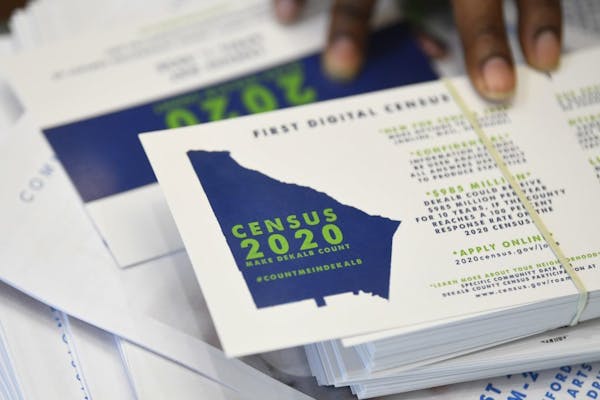Months before the 2020 census kicks off in April, Hennepin County is working ahead to ensure hard-to-count areas and communities are tallied and to sweep away obstacles that might discourage residents from filling it out.
"Do they have issues with hacking or the citizenship question?" asked Alisa Salewski, the county's chief innovation officer. "We need to know the blocking points and remove those barriers."
Other factors that could influence the count include disinformation, fairness and accuracy, and privacy issues.
No specific goal has been set for next year's census, Salewski said. It's hard to predict the results because 2020 will be the first census done electronically. In the 2010 census, the participation rate was 81% for Minnesota and 82% for Hennepin County.
Gathering data for the census started in 2017 when Hennepin County officials asked cities for resident address updates. The county created a census task force in 2018 and this year established field offices and "diverse count committees" to engage residents in the census process.
The Hennepin County Board received a recent update on the county's comprehensive plan to ensure data is as complete and accurate as possible. While English is the most common language spoken in Hennepin County, the census is offered in dozens of languages — though not Oromo, Commissioner Angela Conley noted at the briefing.
Self-response to the census survey starts April 1, followed by several months when census workers will be tracking down people who don't file their data.
It's estimated that 235,000 county residents won't respond without additional follow-up. The count committees have proved to be the best way to get residents to fill out census forms, said Salewski.
Potential obstacles to an accurate count include mobile populations, language barriers, lack of access to the internet, distrust in government and informal living arrangements.
Apartment access is always difficult and risks undercounting of renters, which affects federal funding for Section 8 housing vouchers and low-income housing tax credits.
Census data also affects funding for health care, education and school lunch programs, as well as highway construction. The data also has important implications for congressional redistricting.
The Legislature approved $1.6 million this year for census work, but Salewski said it's difficult to isolate a cost for Hennepin County alone.
Many of the county's 9,100 employees — including those in service centers, libraries and other county buildings — will be trained to assist people with the census. Toward that end, the county has formed partnerships with dozens of public sector and nonprofit groups, including the State Demographer's Office, the Minnesota Census Mobilization Partnership and representatives of several minority groups.
At the recent board briefing, a state census official said the bureau is "way behind" in applications for census jobs. The state needs 7,500 workers, which will take 40,000 applications to fill, said Salewski. The temporary, part-time jobs pay from $14 to $20 an hour. Applicants should go to mn.gov/admin/2020-census/work-for.
"These are well-paying jobs and a great way to get involved," Salewski said.
David Chanen • 612-673-4465

Minnesota State Patrol celebrates diverse new class of troopers

Records: Former Minneapolis police oversight head disparaged women, threatened staff
Video goes viral of man enduring 'shocking' chain whipping on downtown St. Paul street
Minnesota sales, clean-ups and other events to celebrate Earth Day and Arbor Day

